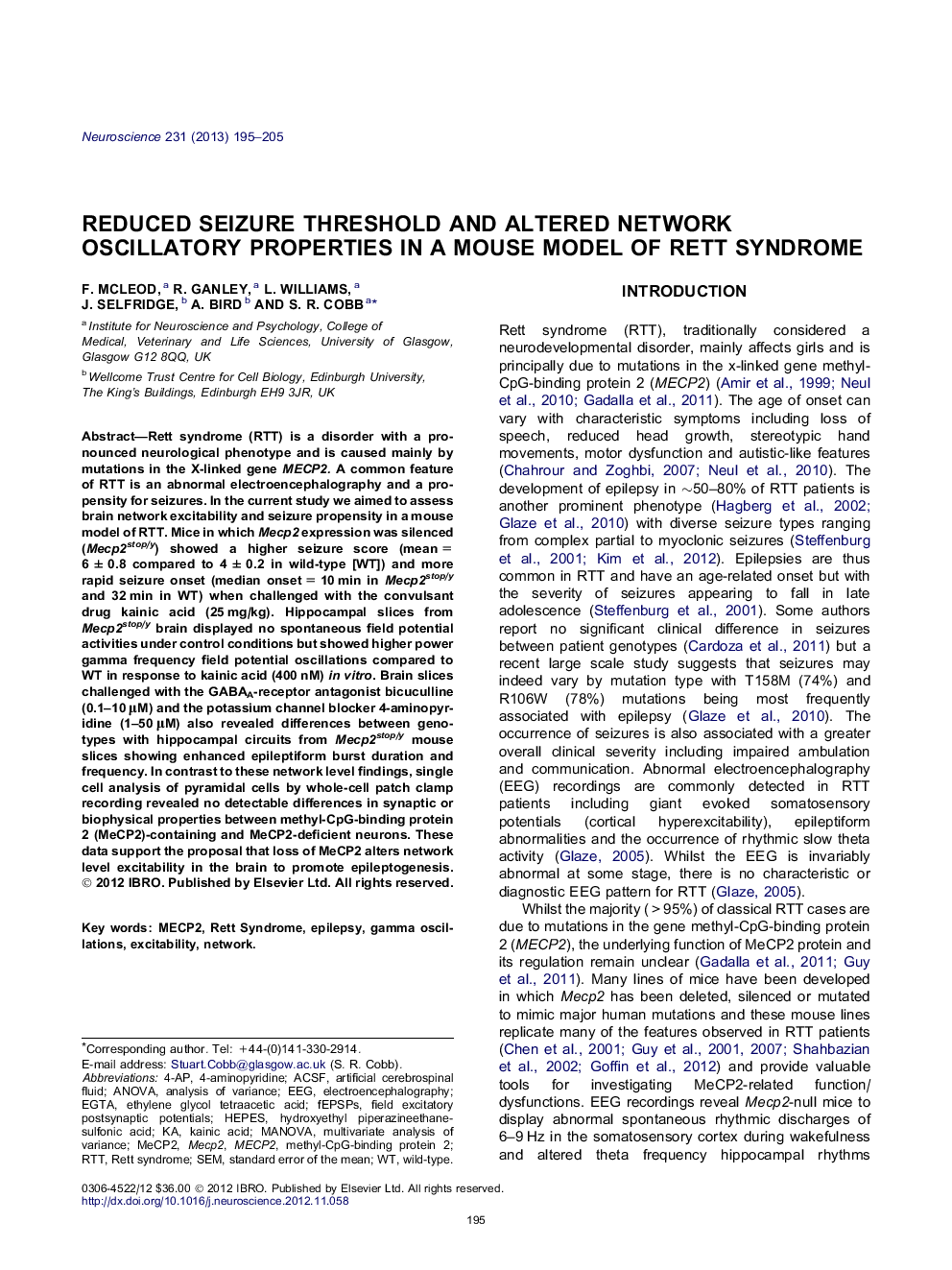| Article ID | Journal | Published Year | Pages | File Type |
|---|---|---|---|---|
| 6275152 | Neuroscience | 2013 | 11 Pages |
Rett syndrome (RTT) is a disorder with a pronounced neurological phenotype and is caused mainly by mutations in the X-linked gene MECP2. A common feature of RTT is an abnormal electroencephalography and a propensity for seizures. In the current study we aimed to assess brain network excitability and seizure propensity in a mouse model of RTT. Mice in which Mecp2 expression was silenced (Mecp2stop/y) showed a higher seizure score (mean = 6 ± 0.8 compared to 4 ± 0.2 in wild-type [WT]) and more rapid seizure onset (median onset = 10 min in Mecp2stop/y and 32 min in WT) when challenged with the convulsant drug kainic acid (25 mg/kg). Hippocampal slices from Mecp2stop/y brain displayed no spontaneous field potential activities under control conditions but showed higher power gamma frequency field potential oscillations compared to WT in response to kainic acid (400 nM) in vitro. Brain slices challenged with the GABAA-receptor antagonist bicuculline (0.1-10 μM) and the potassium channel blocker 4-aminopyridine (1-50 μM) also revealed differences between genotypes with hippocampal circuits from Mecp2stop/y mouse slices showing enhanced epileptiform burst duration and frequency. In contrast to these network level findings, single cell analysis of pyramidal cells by whole-cell patch clamp recording revealed no detectable differences in synaptic or biophysical properties between methyl-CpG-binding protein 2 (MeCP2)-containing and MeCP2-deficient neurons. These data support the proposal that loss of MeCP2 alters network level excitability in the brain to promote epileptogenesis.
⺠We show altered seizure threshold in a mouse model of Rett syndrome. ⺠Network level hyperexcitability is also revealed in brain slices from Rett mice. ⺠This contrasts with normal intrinsic excitability at the level of single neurons.
